A Compound Sensor for Simultaneous Measurement of Packing Density and Moisture Content of Silage
Abstract
:1. Introduction
2. Compound Sensor Design
3. Results and Discussion
3.1. Force Calibration
3.2. Calibration of Moisture Content
3.3. Validation Test
4. Conclusions
Acknowledgments
Author Contributions
Conflicts of Interest
References
- Sun, Y.; Cheng, Q.; Meng, F.; Buescher, W.; Maack, C.; Ross, F.; Lin, J. Image-based comparison between a γ-ray scanner and a dual-sensor penetrometer technique for visual assessment of bale density distribution. Comput. Electron. Agric. 2012, 82, 1–7. [Google Scholar] [CrossRef]
- Li, M.; Jungbluth, K.; Sun, Y.; Cheng, Q.; Maack, C.; Buescher, W.; Lin, J.; Zhou, H.; Wang, Z. Developing a Penetrometer-Based Mapping System for Visualizing Silage Bale Density from the Bunker Silo Face. Sensors 2016, 16, 1038. [Google Scholar] [CrossRef] [PubMed]
- Meng, F.; Sun, Y.; Buescher, W.; Maack, C.; Cheng, Q.; Berg, A.; Lin, J.; Ross, F.; Zhang, H. An Extended Penetrometer System for the Map-based Assessment of Bale Density Distribution. Appl. Eng. Agric. 2012, 28, 449–455. [Google Scholar] [CrossRef]
- Sun, Y.; Buescher, W.; Lin, J.; Schulze Lammers, P.S.; Ross, F.; Maack, C.; Cheng, Q.; Sun, W. An improved penetrometer technique for determining bale density. Biosyst. Eng. 2010, 105, 273–277. [Google Scholar] [CrossRef]
- Li, M.; Sun, Y.; Cheng, Q.; Jungbluth, K.H.; Buescher, W.; Maack, C.; Cheng, H.; Wang, Z. Mapping oxygen-induced temperature patterns of round bale silage based on 3D stepwise-profiling measurement. Measurement 2016, 82, 115–122. [Google Scholar] [CrossRef]
- Sun, Y.; Li, M.; Zhou, H.; Shan, G.; Cheng, Q.; Jungbluth, K.H.; Buescher, W.; Maack, C.; Lipski, A.; Wang, Z.; et al. In situ measurements and simulation of oxygen diffusion and heat transfer in maize silage relative to the silo surface. Comput. Electron. Agric. 2017, 137, 1–8. [Google Scholar] [CrossRef]
- Toruk, F.; Gonulol, E.; Ulger, P.; Kocabiyik, H. Density, porosity and permeability rates of sunflower silage under different compaction conditions. J. Anim. Vet. Adv. 2009, 8, 1873–1877. [Google Scholar]
- Wambacq, E.; Vanhoutte, I.; Audenaert, K.; de Gelder, L.; Haesaert, G. Occurrence, prevention and remediation of toxigenic fungi andcmycotoxins in silage: A review. J. Sci. Food Agric. 2016, 96, 2284–2302. [Google Scholar] [CrossRef] [PubMed]
- Pitt, R.E.; Muck, R.E. A diffusion model of aerobic deterioration at the exposed face of bunker silo. J. Agric. Eng. Res. 1993, 55, 11–26. [Google Scholar] [CrossRef]
- Zheng, Y.; Yates, M.; Aung, H.; Cheng, Y.; Yu, C.; Guo, H.; Zhang, R.; VanderGheynst, J.; Jenkins, B.M. Influence of moisture content on microbial activity and silage quality during ensilage of food processing residues. Bioprocess Biosyst. Eng. 2011, 34, 987–995. [Google Scholar] [CrossRef] [PubMed]
- Fuerll, C.; Schemel, H.; Koeppen, D. Principles for measuring density in silages. Landtechnik 2008, 63, 94–95. [Google Scholar]
- Mumme, M.; Katzameryer, J. Mobile test station for the radiometric measurement of density distribution in bales. Landtechnik 2008, 63, 341–343. [Google Scholar]
- Perumpral, J.V. Cone penetrometer application: A review. Trans. ASAE 1987, 30, 939–944. [Google Scholar] [CrossRef]
- Sun, Y.; Meng, F.; Buescher, W.; Schulze Lammers, P.; Lin, J.; Ross, F.; Maack, C.; Cheng, Q. A study to identify and correct friction-induced error of penetration measurement for agricultural materials. Measurement 2012, 45, 829–835. [Google Scholar] [CrossRef]
- Cai, X.; Sun, Y.; Schulze-Lammers, P.; Buescher, W.; Maack, C.; Meng, F.; Lin, J.; Cheng, Q.; Zhang, H. Shaft friction of an ASABE standard soil cone penetrometer. Trans. ASABE 2013, 56, 839–846. [Google Scholar]
- ISO 6496:1999. Animal Feeding Stuffs—Determination of Moisture and Other Volatile Matter Content; ISO: Geneva, Switzerland, 1999. [Google Scholar]
- Wang, C.; Yang, Z.; Zhang, W. Rapid Determination of Moisture in Feedstuffs with an Infrared Moisture Meter. Cereal Feed Ind. 2003, 2, 47–48. [Google Scholar]
- Lin, J.; Sun, Y.; Lammers, P. Evaluating model-based relationship of cone index, soil water content and bale density using dual-sensor penetrometer data. Soil Tillage Res. 2014, 138, 9–16. [Google Scholar] [CrossRef]
- ASABE Standards. Procedures for Using and Reporting Data Obtained with Soil Cone Penetromenter; ASAE Standard EP542; ASABE: St. Joseph, MI, USA, 1999. [Google Scholar]
- Sun, Y.; Schulze-Lammersb, P.; Ma, D.; Lin, J.; Zeng, Q. Determining soil physical properties by multi-sensor technique. Sens. Actuators A Phys. 2008, 147, 352–357. [Google Scholar]
- Naderi-Boldaji, M.; Alimardani, R.; Hemmat, A.; Sharifi, A.; Keyhani, A.; Dolatsha, N.; Keller, T. Improvement and field testing of a combined horizontal penetrometer for on-the-go measurement of soil water content and mechanical resistance. Soil Tillage Res. 2012, 123, 1–10. [Google Scholar] [CrossRef]
- Naderi-Boldaji, M.; Sharifi, A.; Jamshidi, B.; Younesi-Alamouti, M.; Minaee, S. A dielectric-based combined horizontal sensor for on-the-go measurement of soil water content and mechanical resistance. Sens. Actuators A Phys. 2011, 171, 131–137. [Google Scholar] [CrossRef]
- Shan, G.; Sun, Y.; Cheng, Q.; Wang, Z.; Zhou, H.; Wang, L.; Xue, X.; Chen, B.; Jones, S.B.; Schulze Lammersd, P.; et al. Monitoring tomato root zone water content variation and partitioning evapotranspiration with a novel horizontally-oriented mobile dielectric sensor. Agric. For. Meteorol. 2016, 228–229, 85–94. [Google Scholar] [CrossRef]

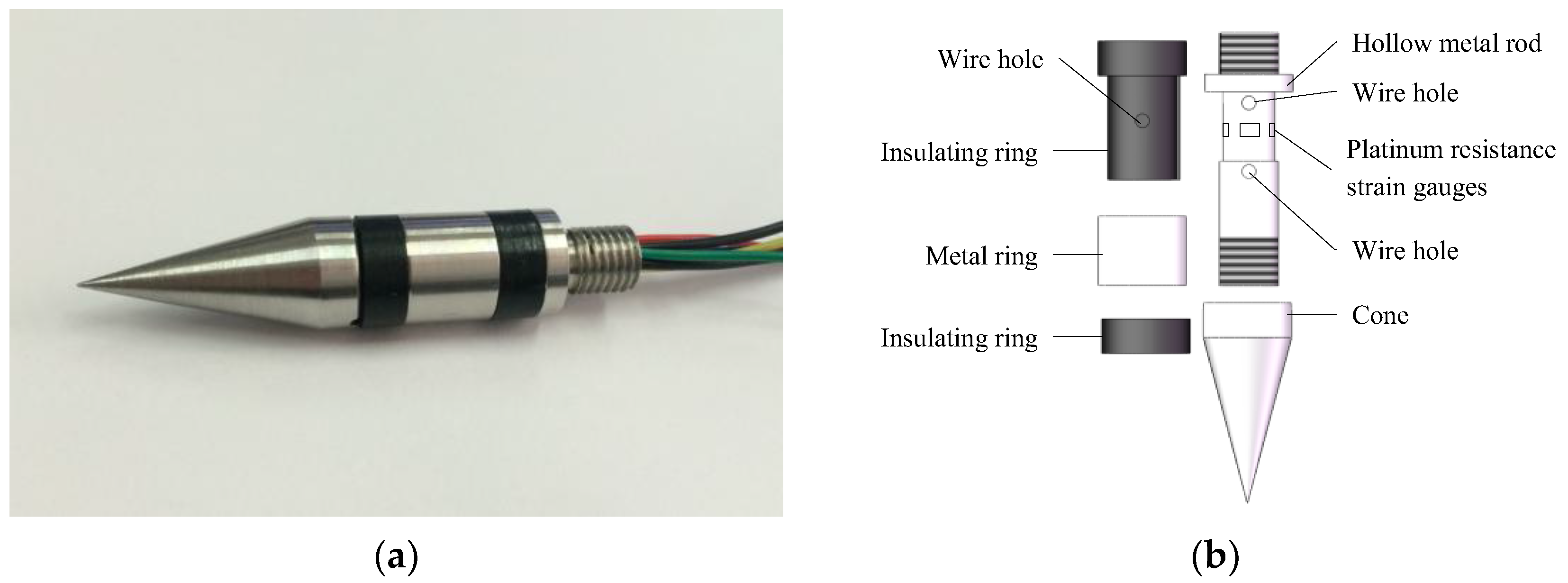
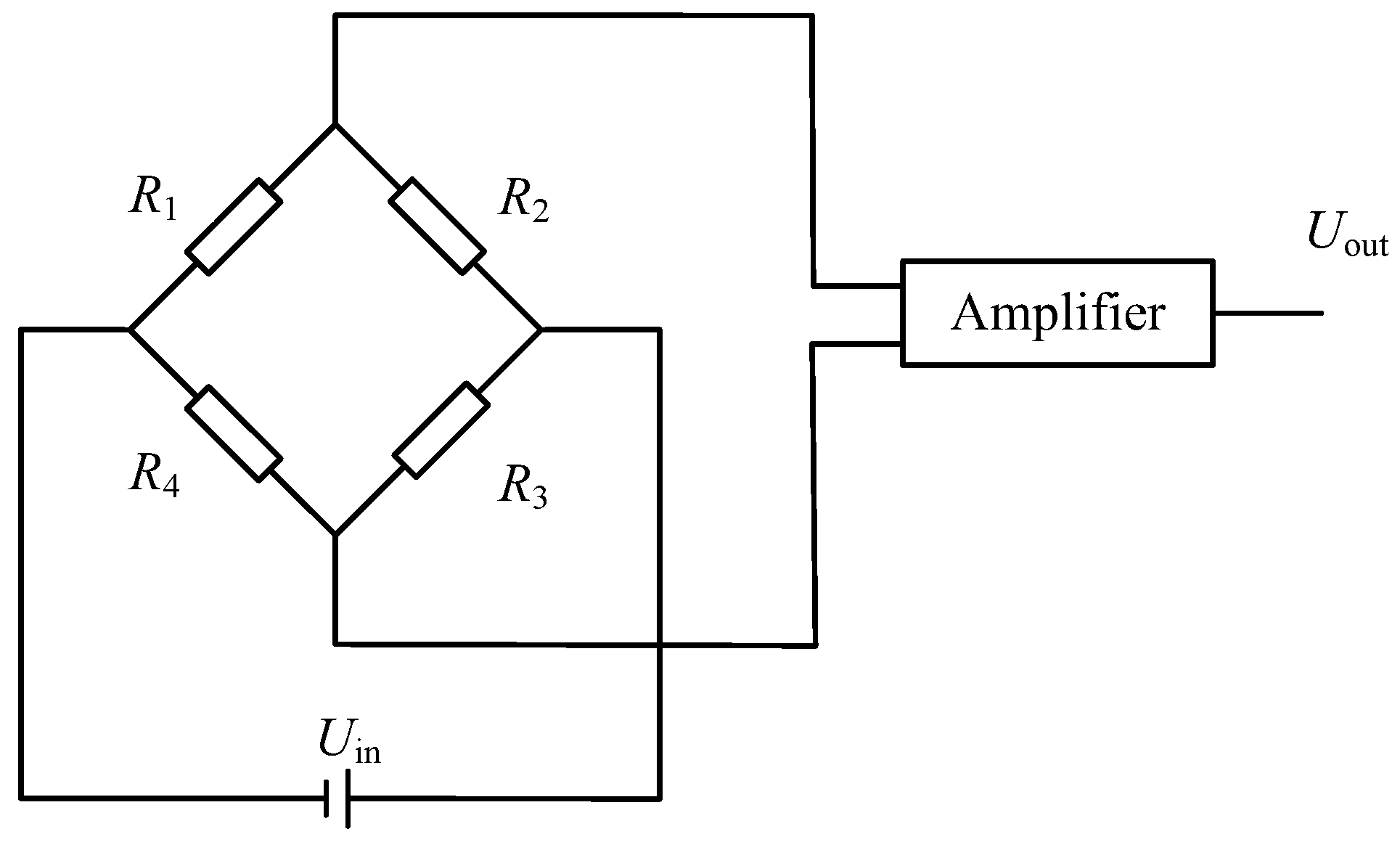
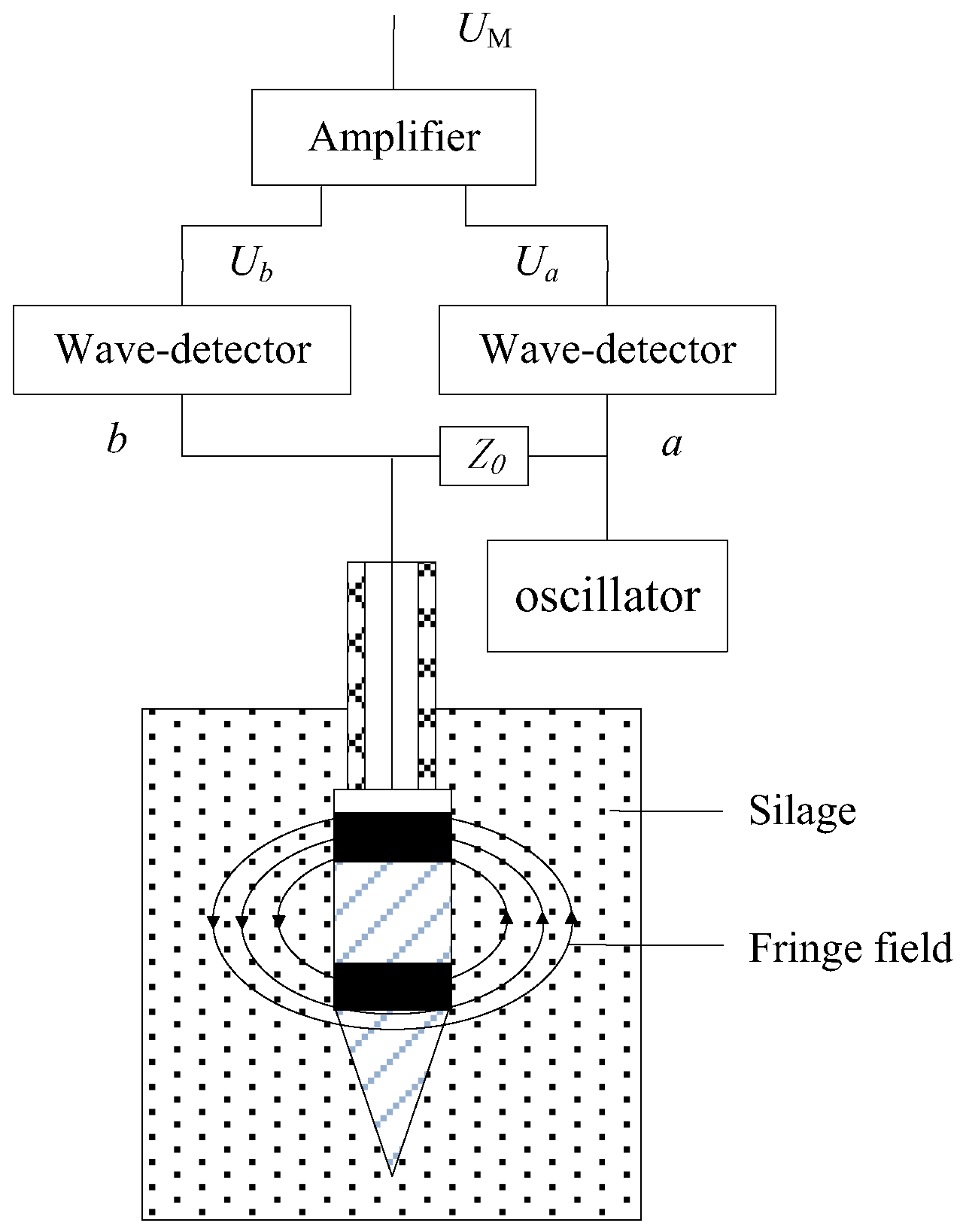
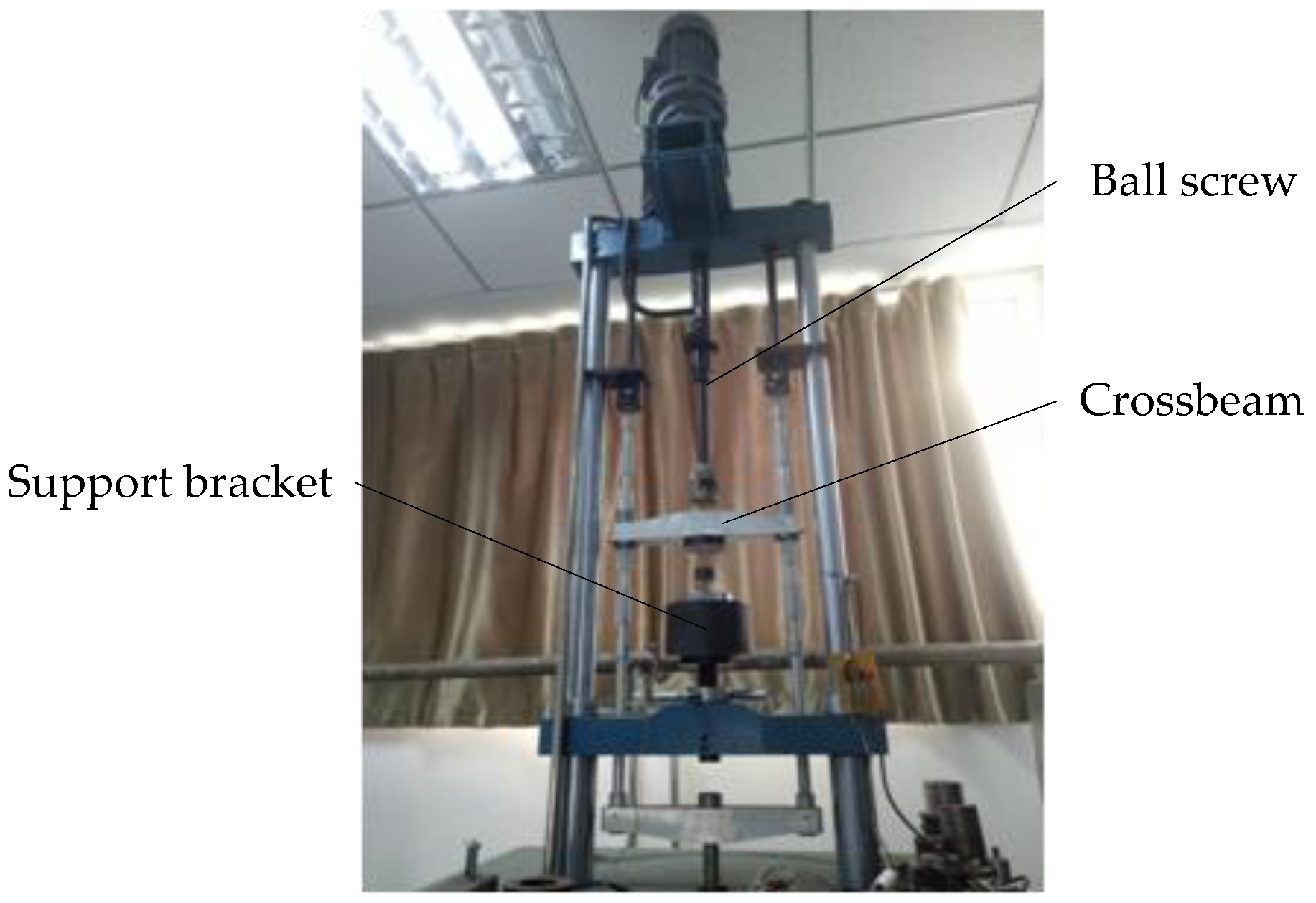
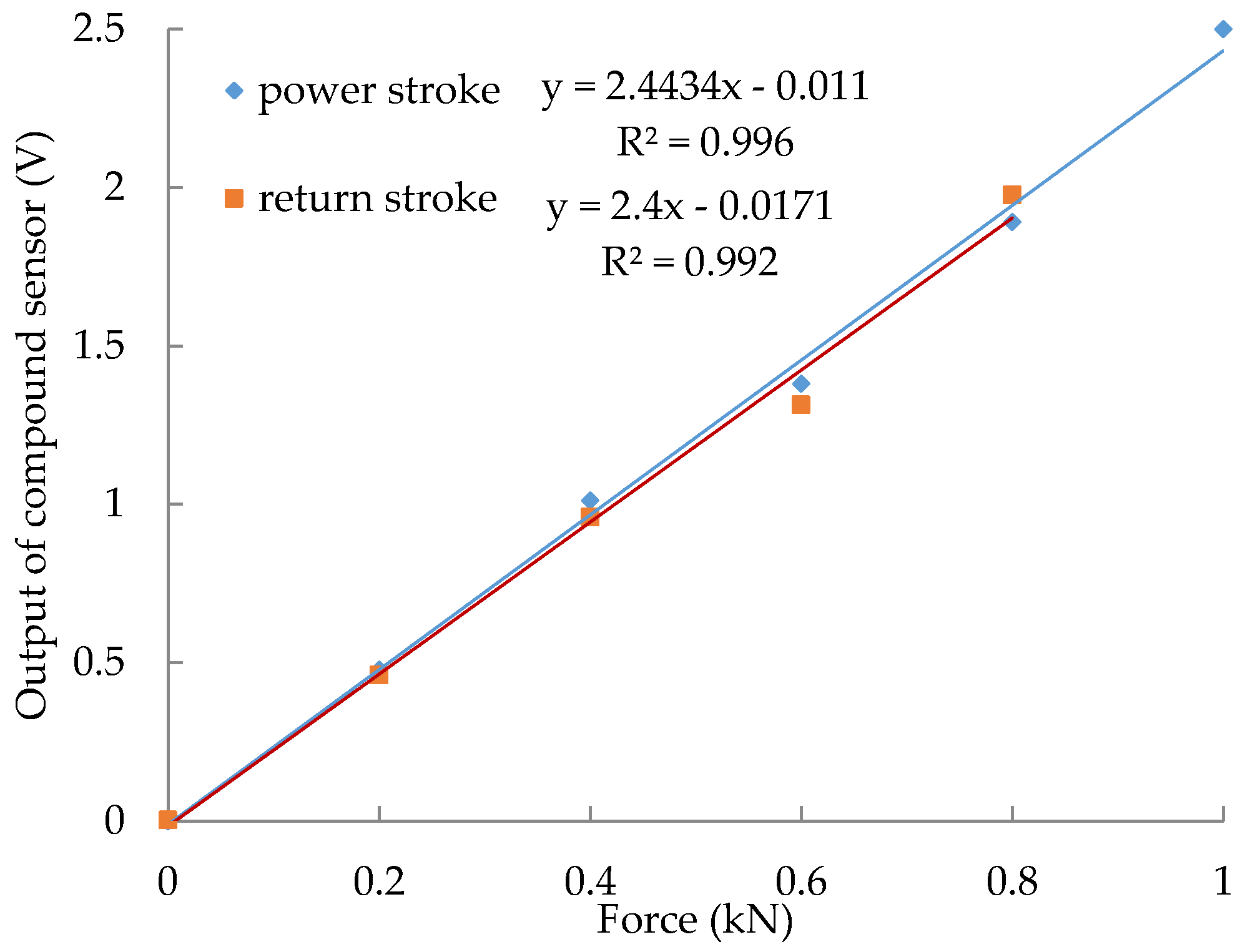
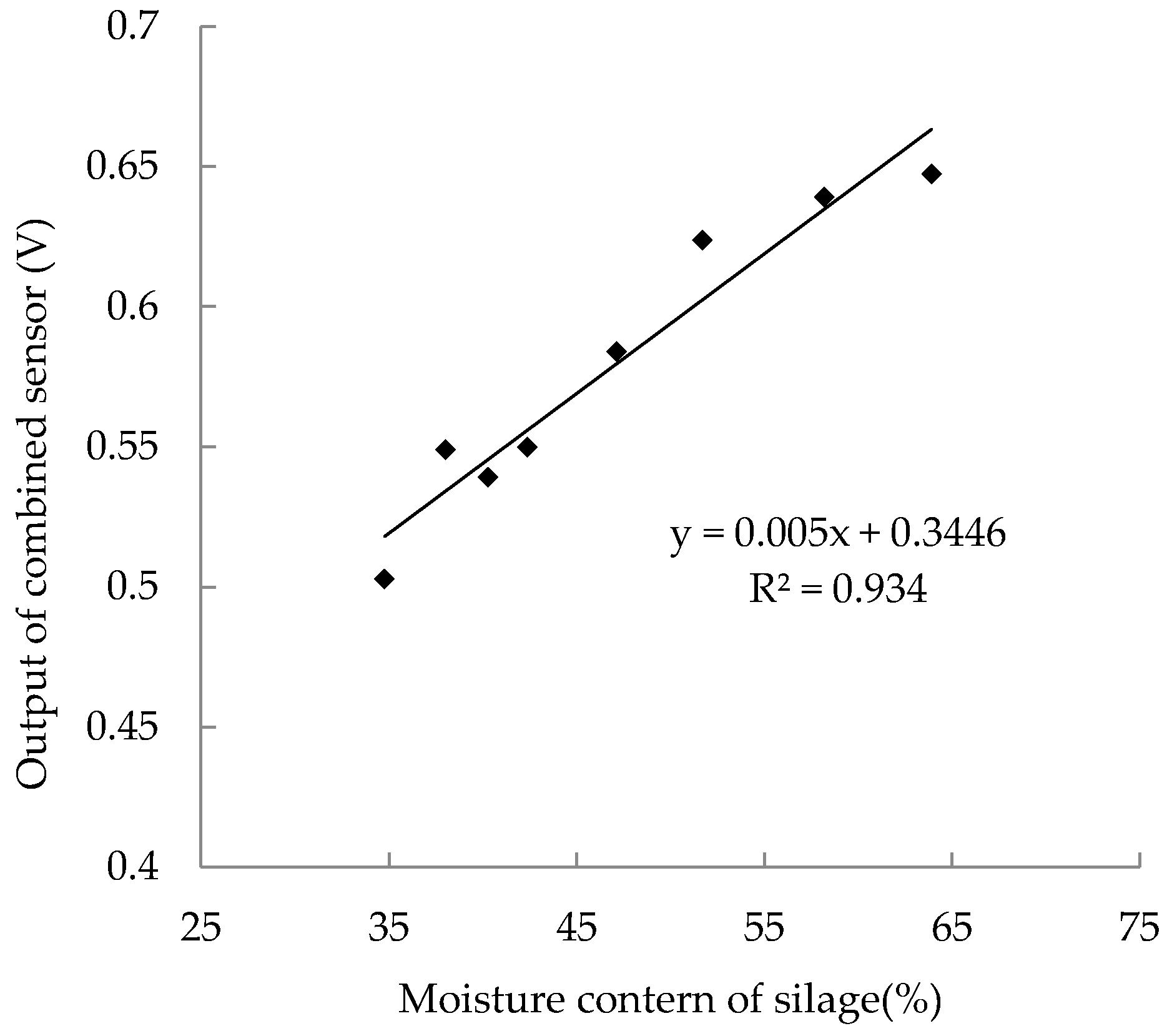
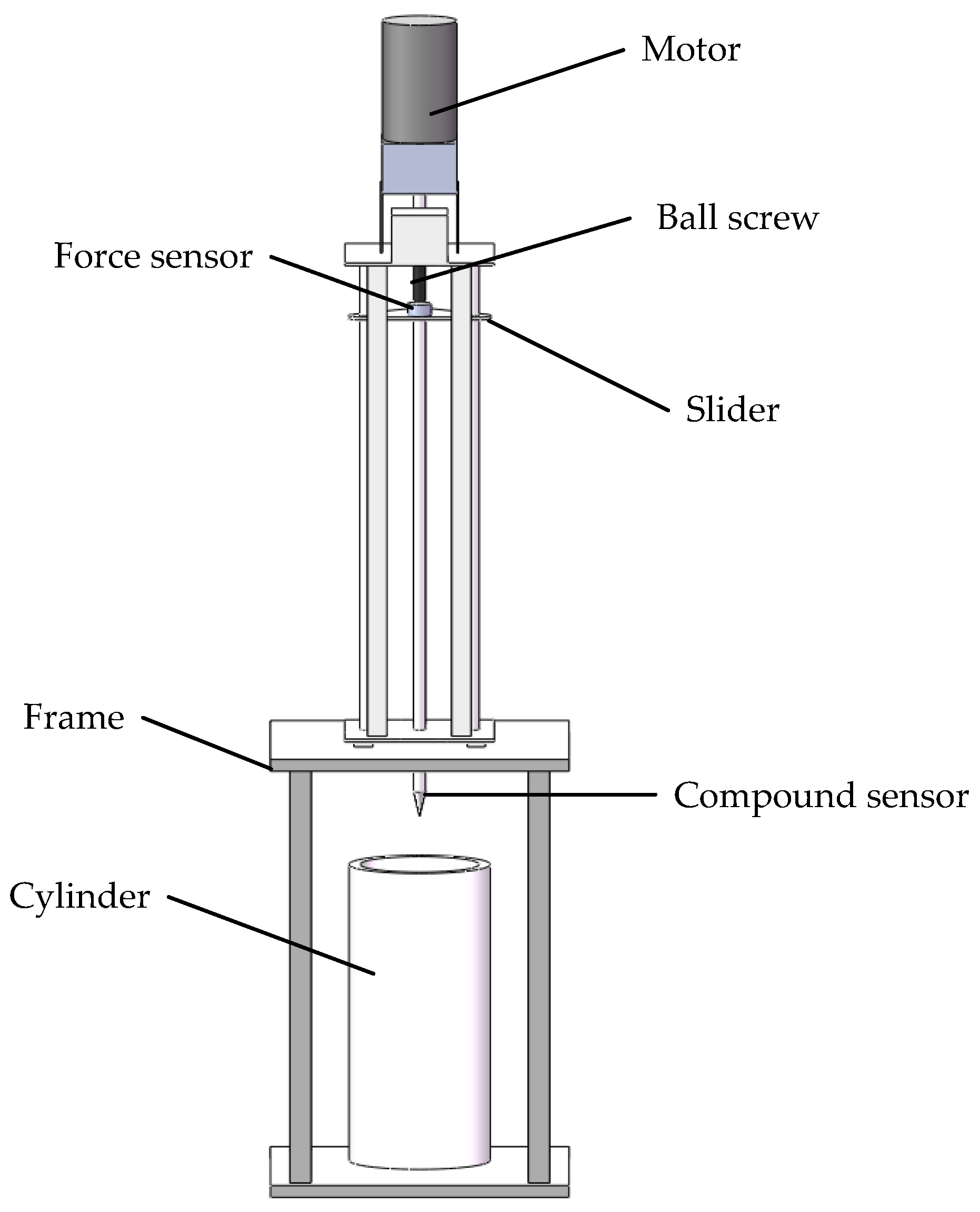
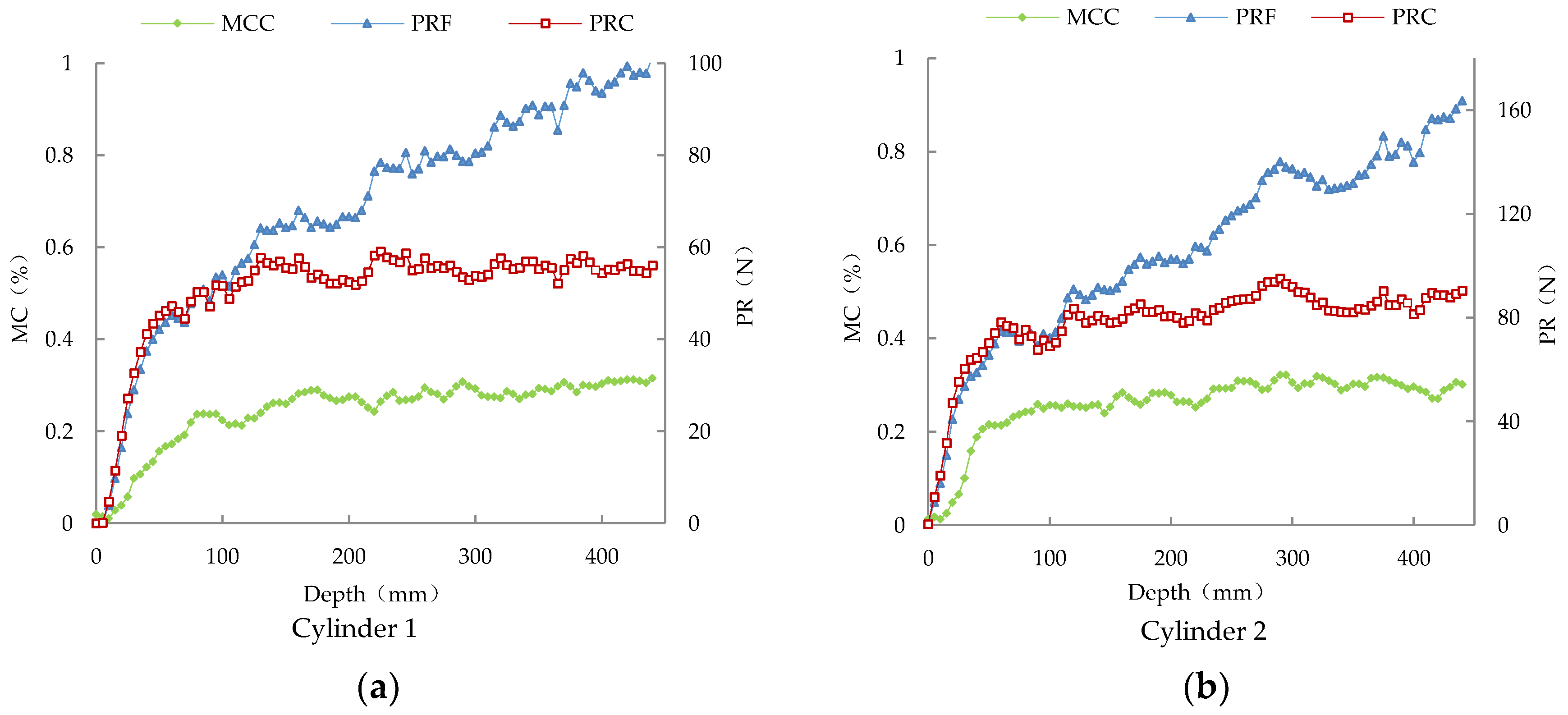
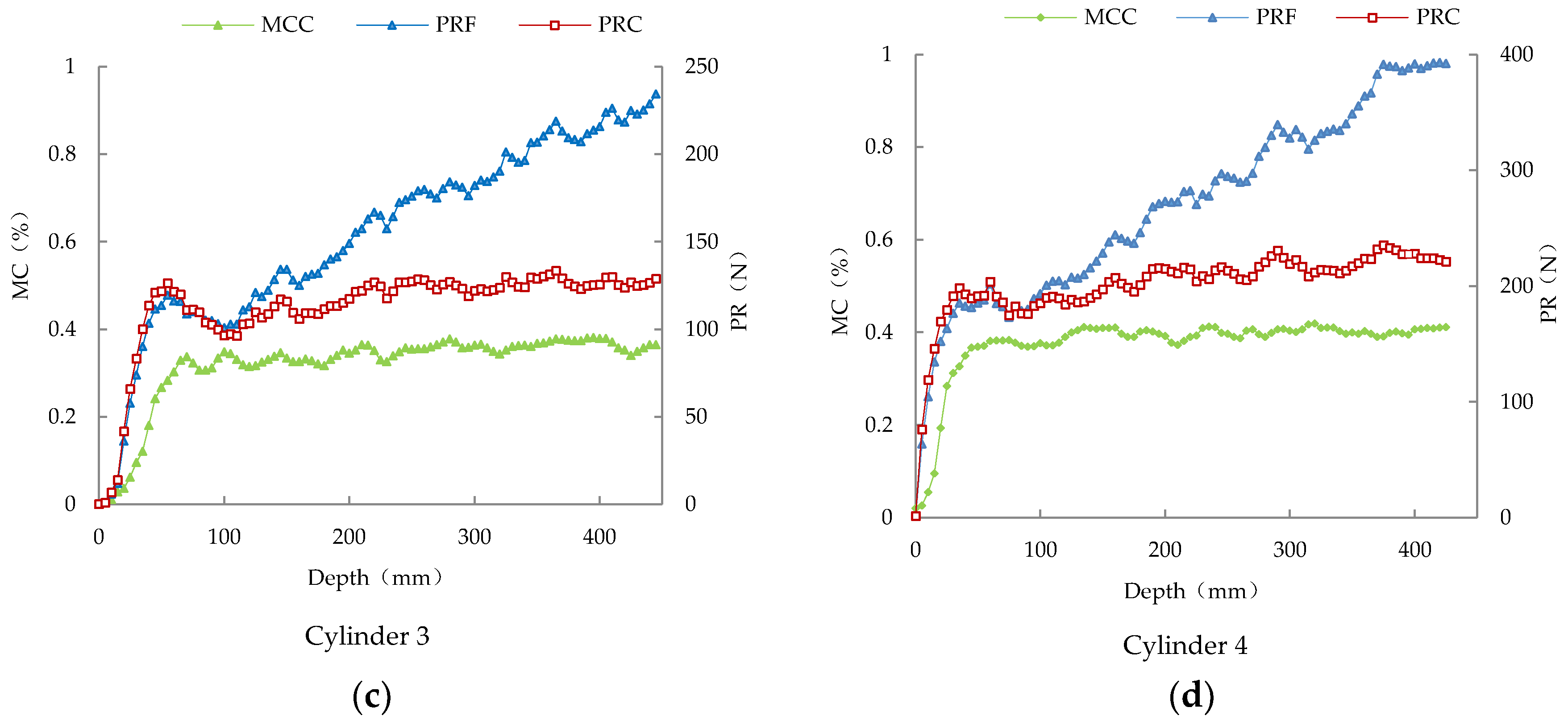
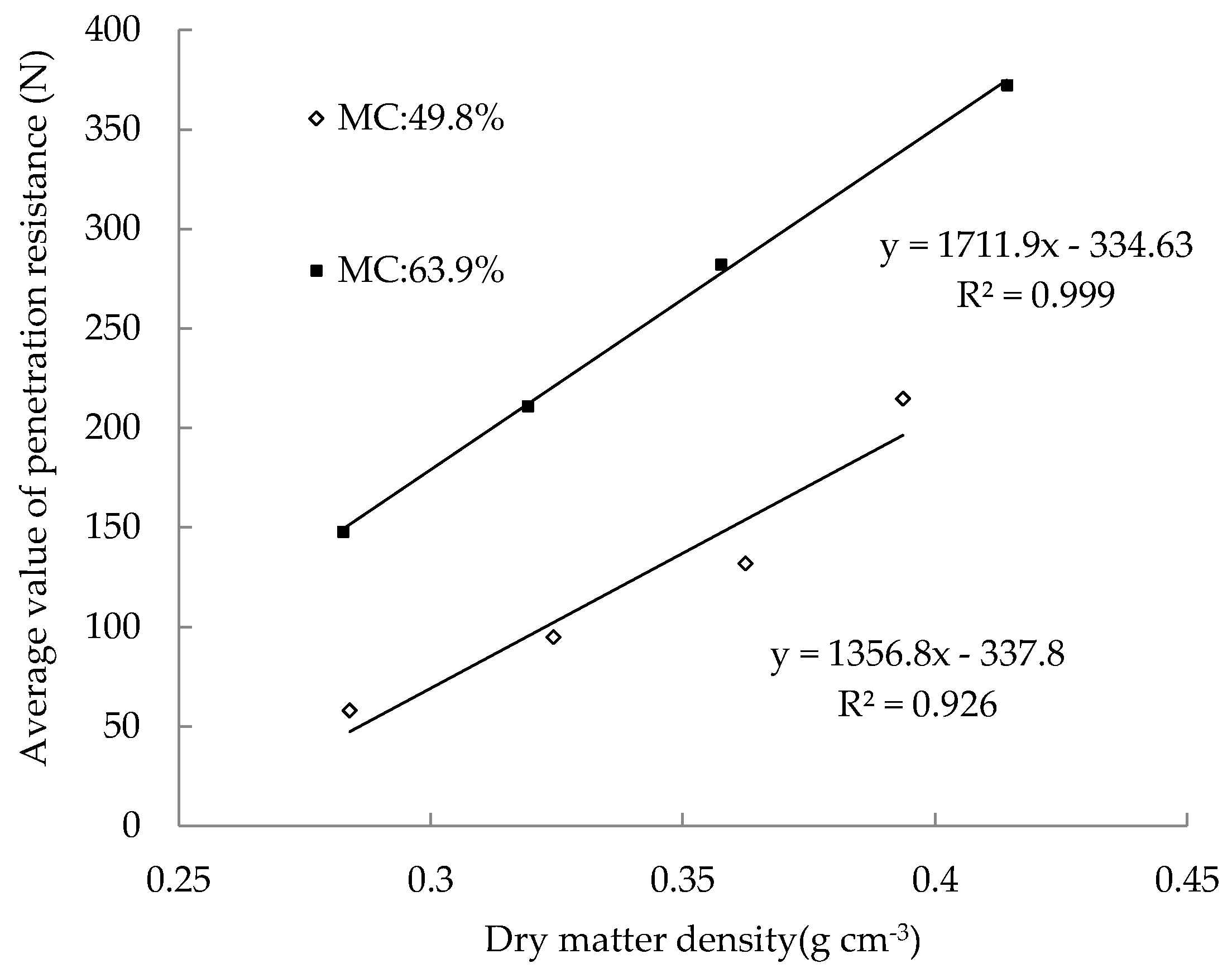
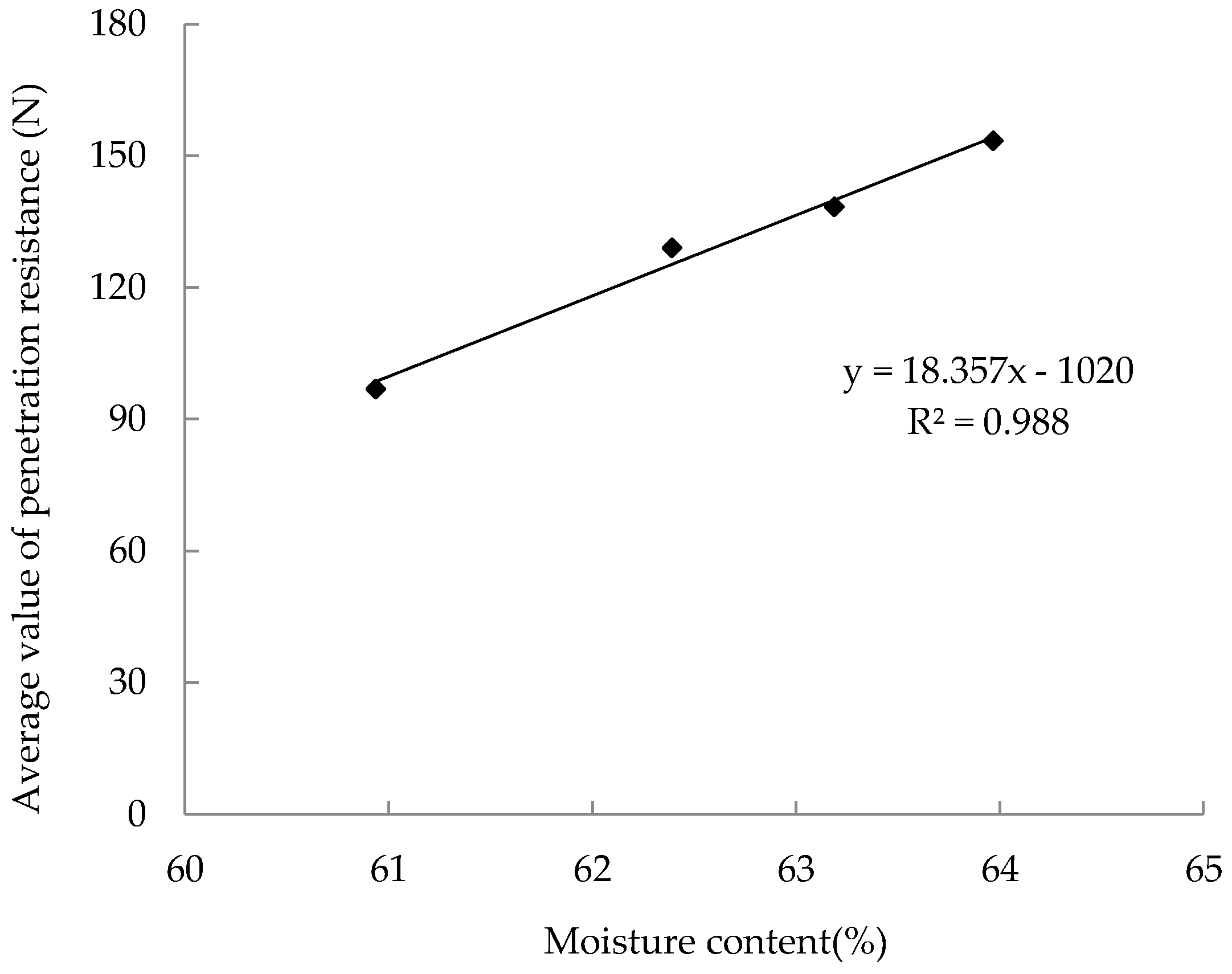
| Gravimetric Moisture Content (%) | Mass (g) | Volume (cm3) | Dry Matter Density (g/cm3) | |
|---|---|---|---|---|
| Cylinder 1 | 49.8 | 9150 | 15,700 | 0.284 |
| Cylinder 2 | 10,150 | 0.324 | ||
| Cylinder 3 | 11,151 | 0.362 | ||
| Cylinder 4 | 12,150 | 0.394 | ||
| Cylinder 5 | 63.9 | 12,650 | 0.283 | |
| Cylinder 6 | 14,150 | 0.319 | ||
| Cylinder 7 | 15,650 | 0.358 | ||
| Cylinder 8 | 17,150 | 0.414 | ||
| Cylinder 9 | 60.9 | 12,022 | 0.299 | |
| Cylinder 10 | 62.4 | 12,487 | ||
| Cylinder 11 | 63.2 | 12,756 | ||
| Cylinder 12 | 64.0 | 13,033 |
© 2017 by the authors. Licensee MDPI, Basel, Switzerland. This article is an open access article distributed under the terms and conditions of the Creative Commons Attribution (CC BY) license (http://creativecommons.org/licenses/by/4.0/).
Share and Cite
Meng, D.; Meng, F.; Sun, W.; Deng, S. A Compound Sensor for Simultaneous Measurement of Packing Density and Moisture Content of Silage. Sensors 2018, 18, 73. https://doi.org/10.3390/s18010073
Meng D, Meng F, Sun W, Deng S. A Compound Sensor for Simultaneous Measurement of Packing Density and Moisture Content of Silage. Sensors. 2018; 18(1):73. https://doi.org/10.3390/s18010073
Chicago/Turabian StyleMeng, Delun, Fanjia Meng, Wei Sun, and Shuang Deng. 2018. "A Compound Sensor for Simultaneous Measurement of Packing Density and Moisture Content of Silage" Sensors 18, no. 1: 73. https://doi.org/10.3390/s18010073
APA StyleMeng, D., Meng, F., Sun, W., & Deng, S. (2018). A Compound Sensor for Simultaneous Measurement of Packing Density and Moisture Content of Silage. Sensors, 18(1), 73. https://doi.org/10.3390/s18010073




